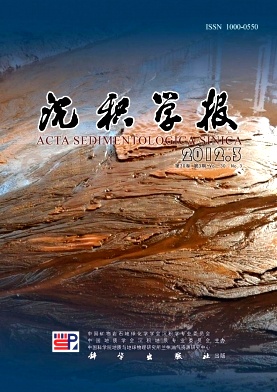Correlation Between the Content of Different Grain Size and Magnetic Susceptibility in Core Changping
- Publish Date: 2012-06-10
-
Key words:
- magnetic susceptibility /
- grain size /
- relative /
- Changping Beijing
Abstract: The different grain size content range from 0.5~500 μm and magnetic susceptibility were measured to study the correlation between grain size and magnetic susceptibility, selected more 590 samples, in sediments from Core Changping. The results show that magnetic susceptibility of the profile is of some relationship with that of the content of different grain sizes, the correlation coefficient between susceptibility and the mean grain size is positive for the whole core. The magnetic minerals are mainly concentrated in fractions with coaster grains. Furthermore, the correlation between grain size and magnetic susceptibility is also affected by sediment source, the degree of sorting process and so on. The correlation coefficient of susceptibility with the content of 0.5~30 μm, especially 0.5~10 μm, is negative, and with the content of 65~500 μm is positive, dominated by large particles of magnetic minerals in the core. In addition, the correlation is different in various depth. Due to the different condition of lake and aggregation, the correlation between magnetic susceptibility and grain sizes should be analyzed depending on deferent sedimental environment. When the strong hydrodynamic, magnetic susceptibility are relatively large, and relatively weak, the magnetic susceptibility is relatively small. Therefore, the grain size and magnetic susceptibility changes to reflect the changes in hydrodynamic conditions, indicating that changes in the strength of the East Asian monsoon. Especially, the climate cycle from the Quaternary period, the to-and-fro of the glaciation and interglaciation, we concluded that data and magnetic susceptibility, particle size and get paleoclimate information of the drilling: 1100~800 ka B.P. is mainly cool and there is a small heating between them, 800~600 ka B.P. cool and warm alternate in temperature, 600~400 ka B.P. climate is prior to hot and humid, 400~200 ka B.P. climate is prior to cold and dry, 200~0 ka B.P. climate is priority to cool alternate fluctuation. Research shows that the core may reflect the 8~10 climatic cyclicities. The area of precipitation increases in humid climate period, with alluvial deposits containing more coarse particles and larger magnetic susceptibility. The fluctuations of susceptibility indicate the changes of paleoclimate.
| Citation: | Correlation Between the Content of Different Grain Size and Magnetic Susceptibility in Core Changping[J]. Acta Sedimentologica Sinica, 2012, 30(3): 572-579. |






 DownLoad:
DownLoad: